Healthy eelgrass meadows increase the resilience of nearshore habitats and also build resilience in coastal communities. Not only is eelgrass an important nursery ground and refuge area for Pacific salmon and forage fish, it also buffers wave energy, reduces shorelines erosion, stabilizes sediment, improves water quality, and sequesters carbon.
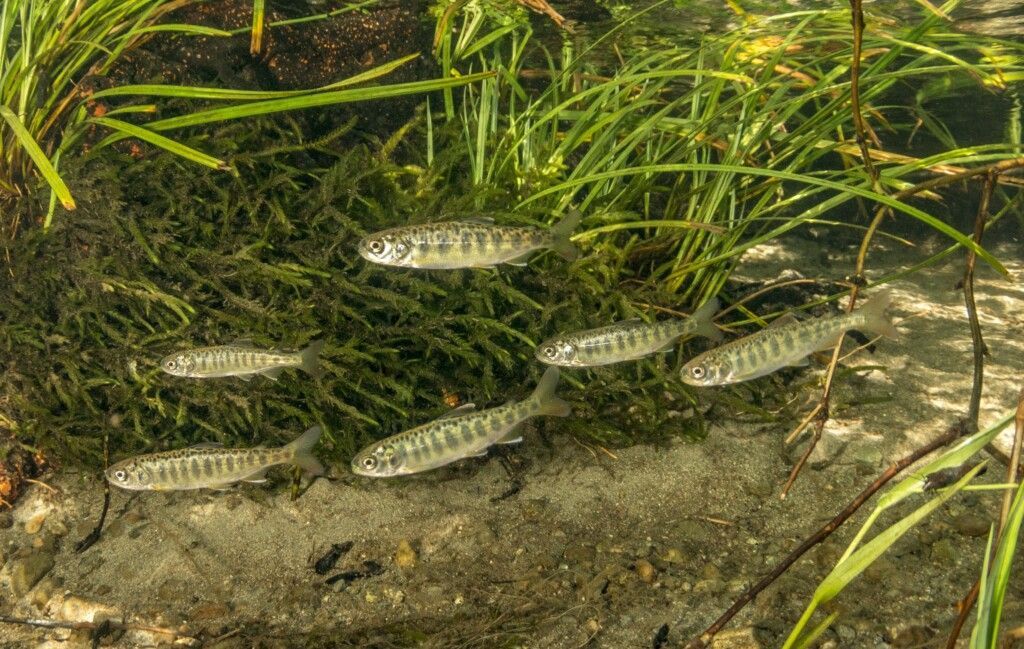
Avoiding accidental damage to eelgrass meadows, which are already facing pressures from pollution and climate change, helps this vital habitat support juvenile salmon and forage fish.
One of key threats to eelgrass is careless anchoring. When anchoring, boaters typically seek out calm bays – which, are also the prime location for eelgrass. Anchoring can scour and damage eelgrass resulting in a reduction in density and extent, and fragmented habitat. It also suspends sediment in the water column that can smother eelgrass reducing its ability to thrive.
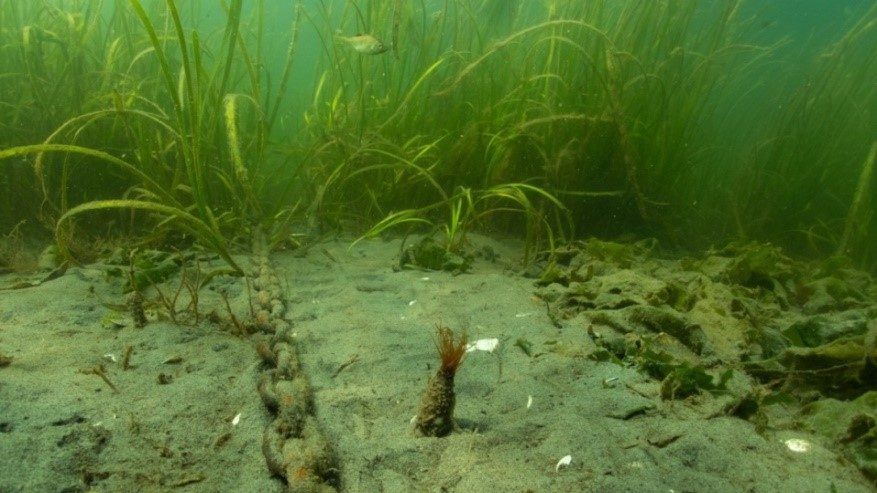
Anchor Deeper
Eelgrass only grows in shallow areas, therefore, damage to eelgrass can be avoided by simply anchoring in depths beyond 8 meters.

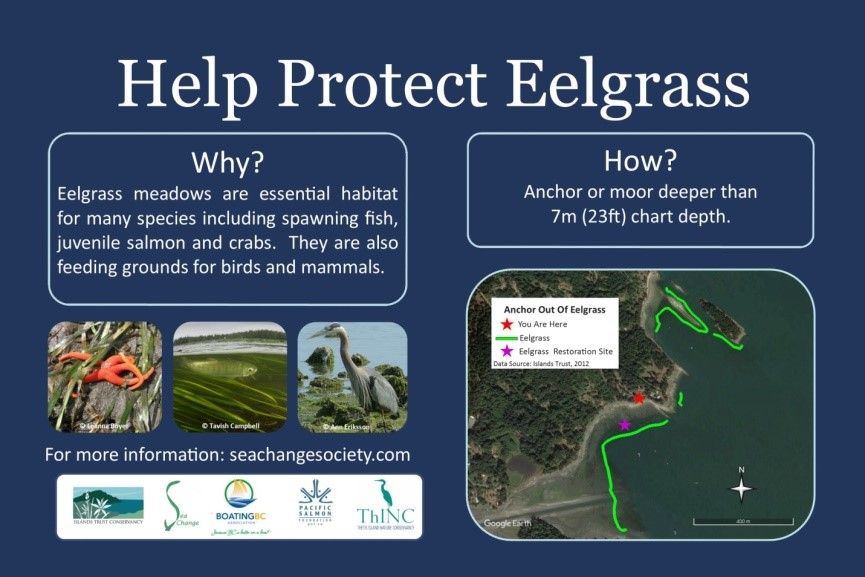
Avoid known eelgrass habitat
On some Gulf Islands you may find signs, such as the one on the left that delineate eelgrass habitat. You can also mark locations on your GPS for eelgrass beds to avoid them in the future. Plan your boating and check out the following map of sensitive nearshore habitat to avoid in the Strait of Georgia. The green shows where eelgrass is and the brown shows where kelp forests are.
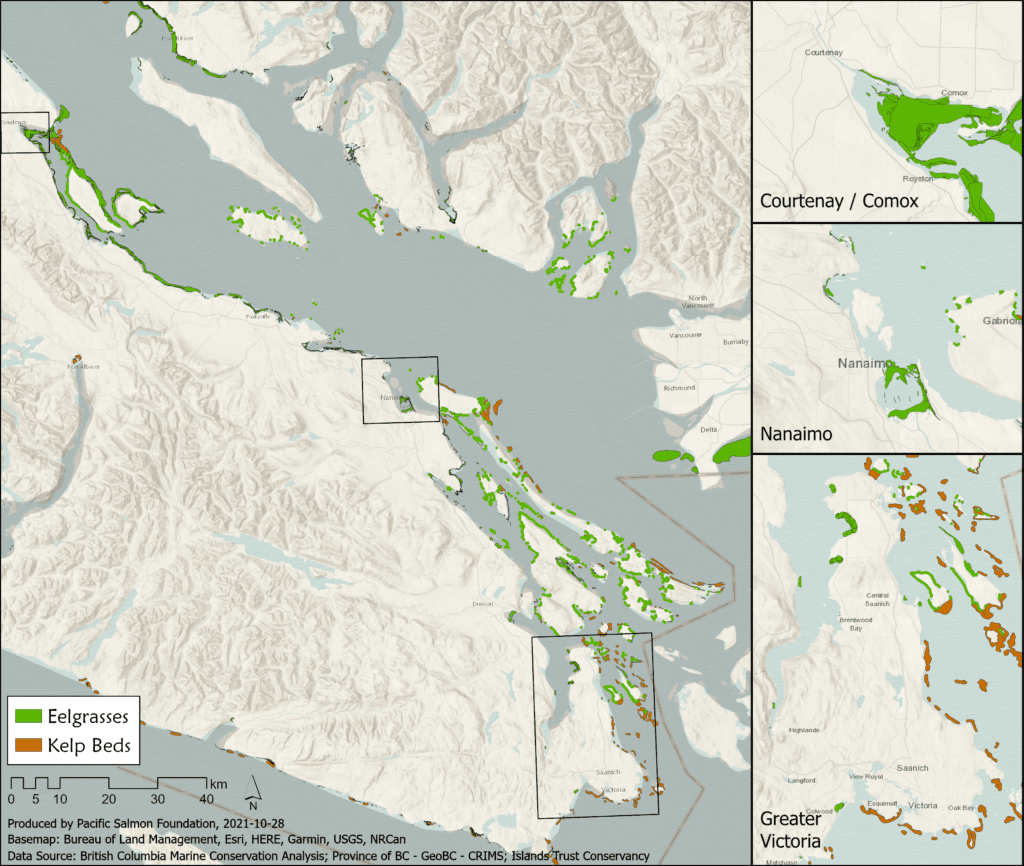
Use Environmentally Friendly Moorings (mid-line float)
Traditional moorings, which consist of heavy chains and anchors, drag and scour the seafloor as the tide ebbs and flows. This scouring of the seafloor leaves circular scars where eelgrass has been scraped away as can be seen in the picture on the right of San Francisco Bay (Kelly et al. 2019).
Instead, environmentally-friendly moorings contain a mid-line float that holds a rope above the seafloor, and therefore will not scour or damage eelgrass. Mooring buoys can be repurposed, but it is best to contact professionals for advice (have your local tidal information and boat specifications when you call). Trotac Marine in Victoria, BC sell parts to create an environmentally-friendly mooring – keep in mind you need a strong cement block to attach it to. See the diagram below of a recommended mooring design provided by Trotac Marine for additional considerations. Even if you’re anchoring away from eelgrass habitat, these moorings help reduce drag and suspended sediment in the water column.
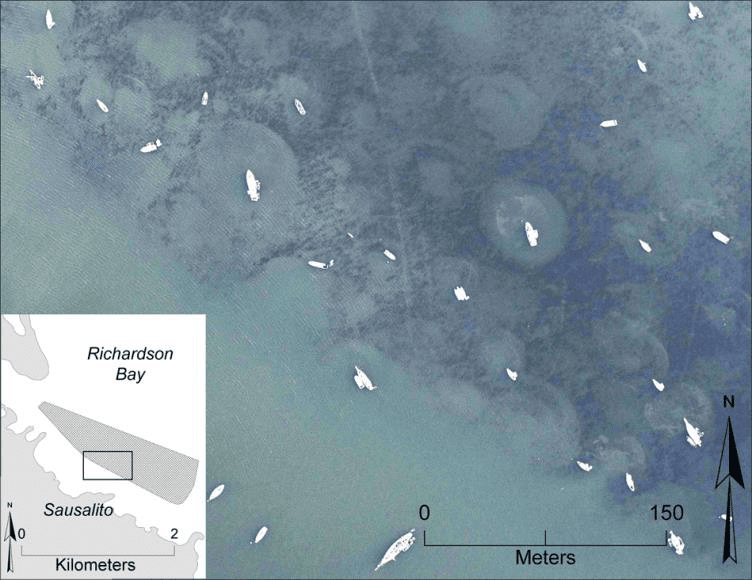
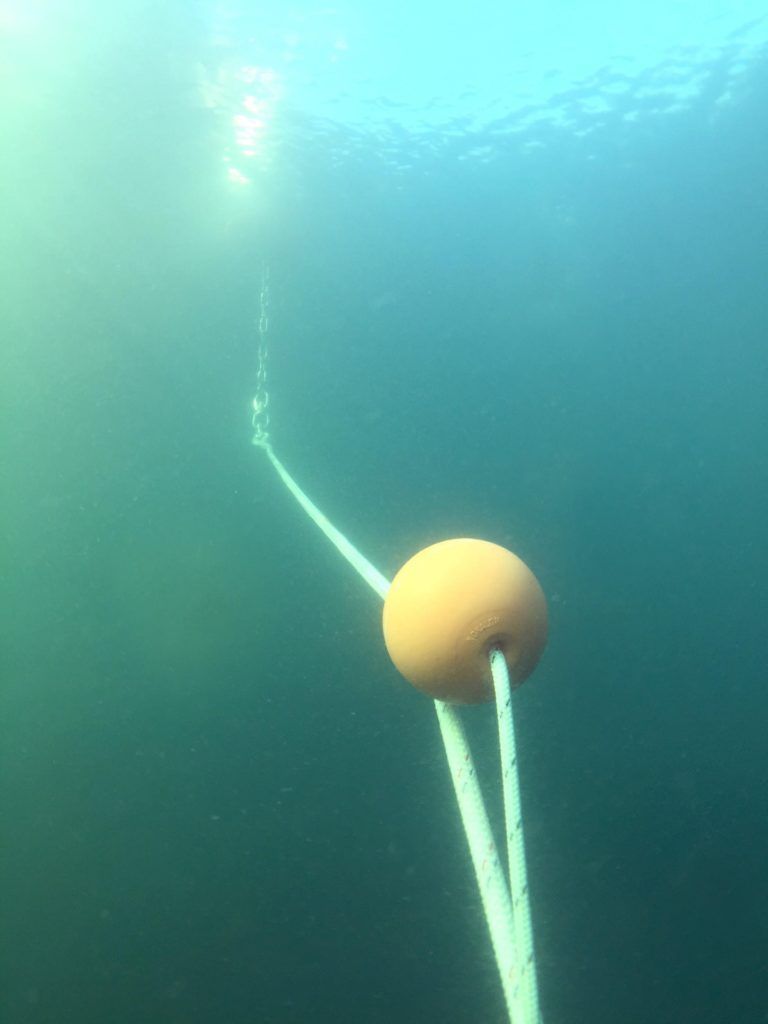

Mind Voluntary No-Anchor Zones
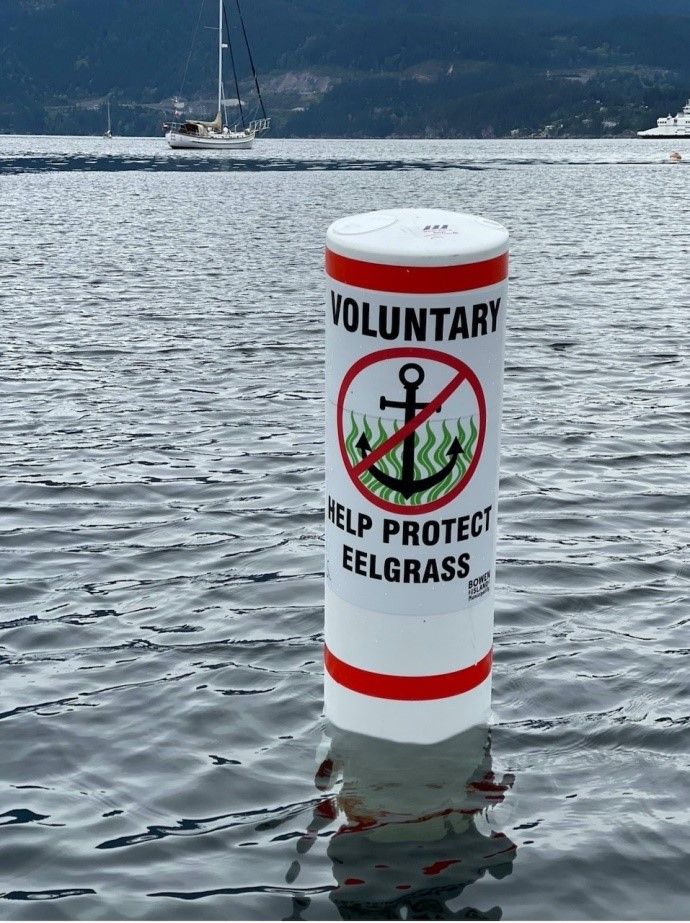
Voluntary No-Anchor Zones have been implemented in Jefferson County, Washington State, USA, with the aim to reduce boat traffic and reduce damage to sensitive habitats. They have experienced a 98% compliance rate! And now you can look for these marker buoys in Canada – it is now a collaborative transboundary initiative! The first ones have been placed around an eelgrass restoration site on Bowen Island, with the help and input by local community members and SeaChange Marine Conservation Society.
Check out AnchorOut.org for more resources and a map of all locations voluntary no-anchor zones across the Salish Sea.
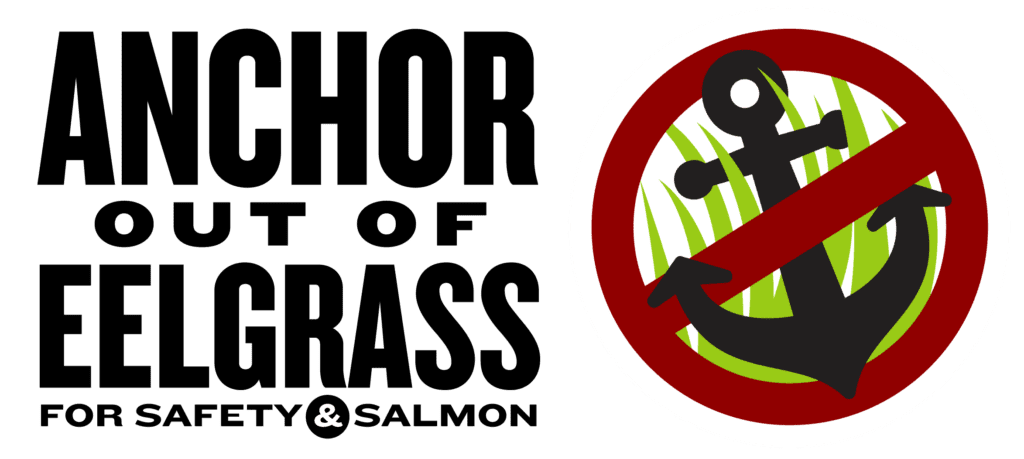
Photo credits: Jeff Skinner, (Kelly et al. 2019) Coastal Photography Studio.